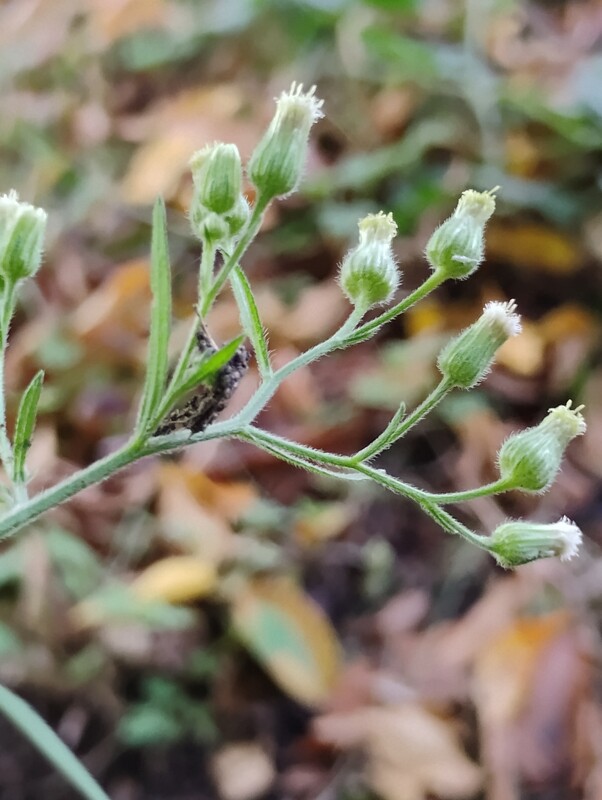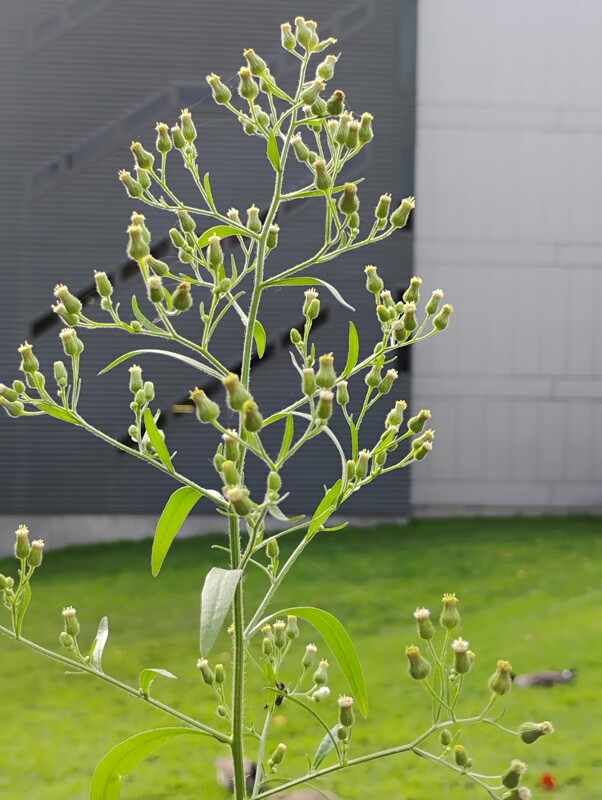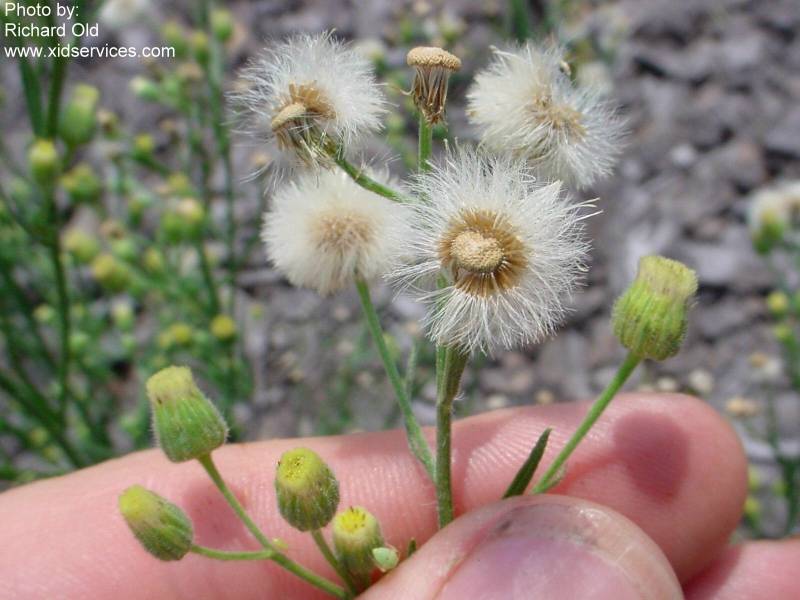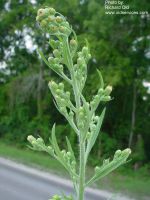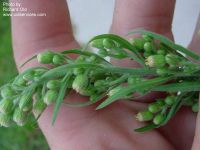Distribution: Occurring west of the Cascades crest in lowland western Washington; Washington to California, eastward in the southern U.S. to the Atlantic Coast.
Habitat: Roadsides, fields, wastelots, and disturbed open areas at low elevations.
Flowers: June-August
Origin: Introduced from South America
Growth Duration: Annual
Conservation Status: Not of concern
Pollination: Bees, flies, beetles, wasps
Somewhat hairy, branched annual, 2-10 dm. tall.
Leaves numerous, hairy, dark green, narrow, up to 10 cm. long and 2 cm. wide, often slightly wrinkled or distorted.
Heads numerous in an open inflorescence, borne on the ends of branches; involucre 6-8 mm. high and 1 cm. wide, short-hairy, its bracts narrow and tapering; flowers white, disk flowers 10-20, ray flowers minute and shorter than the pappus.
Achene about one-half the length of the capillary pappus.
Publication: Bull. Torrey Bot. Club. 70: 632. 1943.
PNW Herbaria: Specimen records of Conyza bonariensis in the Consortium of Pacific Northwest Herbaria database
WA Flora Checklist: Conyza bonariensis checklist entry
OregonFlora: Conyza bonariensis information
E-Flora BC: Conyza bonariensis atlas page
CalPhotos: Conyza bonariensis photos

